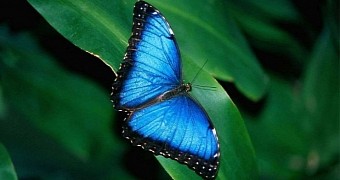A recent paper in the journal Bioinspired, Biomimetic and Nanobiomaterials details a series of experiments that ended with the growing of butterfly wings in laboratory conditions.
The paper, authored by Helen Townley with the Oxford University and Andrew Parker with London's Natural History Museum, explains that the first step to creating butterfly wings is collecting cells that will serve as raw materials.
To complete these experiments, Helen Townley and Andrew Parker first collected cells from a blue morpho butterfly chrysalis, which they put in a dish and exposed to nutrients. Eventually, these cells grew to form a pair of forewings.
Unfortunately, the butterfly cells that the scientists first toyed with failed to form wing structure material for an unlimited period of time. On the contrary, they passed away shortly after the experimenting began.
By comparison, cells taken from a beetle were found well capable of producing wing structure material for an indefinite period of time, as long as they were kept safe and properly fed, Phys Org informs.
Growing butterfly wings in the lab might seem like a complete waste of time, but according to Helen Townley and Andrew Parker, it most definitely isn't. Thus, these researchers hope that their work will lead to the development of coatings and paints that do not fade.
As detailed in the journal Bioinspired, Biomimetic and Nanobiomaterials, butterfly wings are not colored. Instead, they simply appear to be because of teeny tiny structures that they are fitted with and that filter light.
Helen Townley and Andrew Parker believe that, by recreating the makeup of these structures in laboratory conditions, it might be possible to develop coatings and paints that never fade and that keep colors fresh and alive for years and years.

 14 DAY TRIAL //
14 DAY TRIAL //